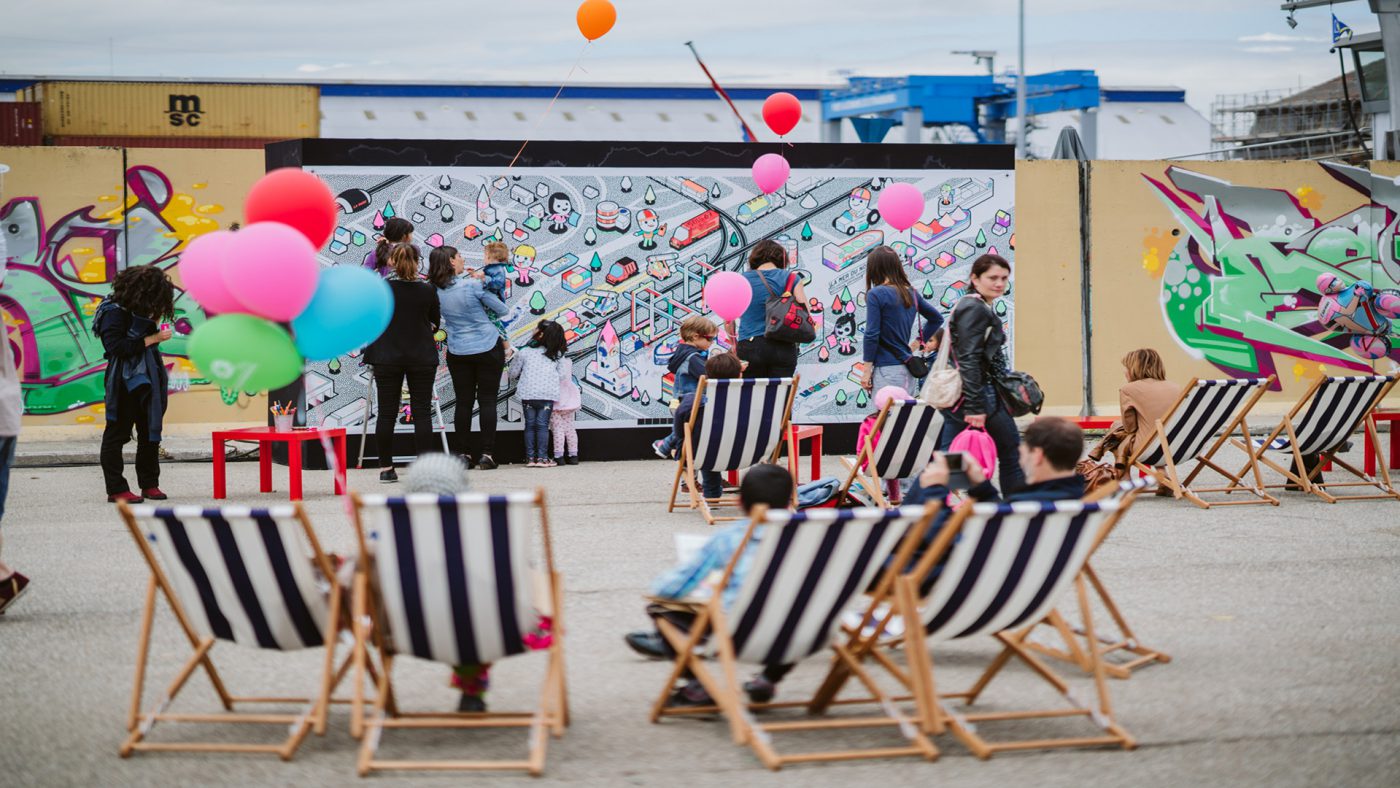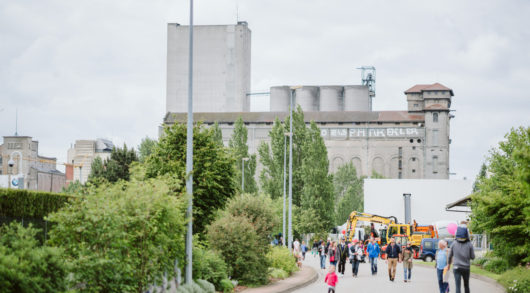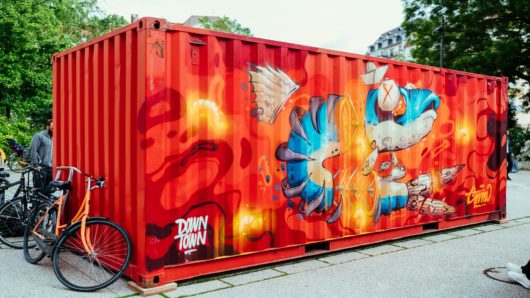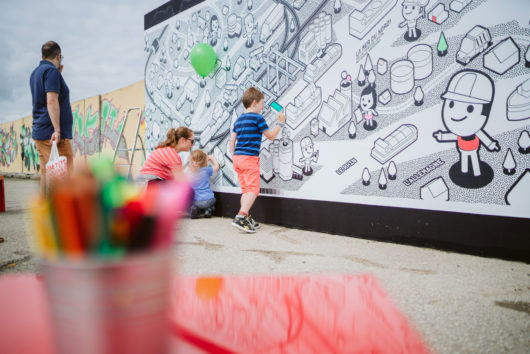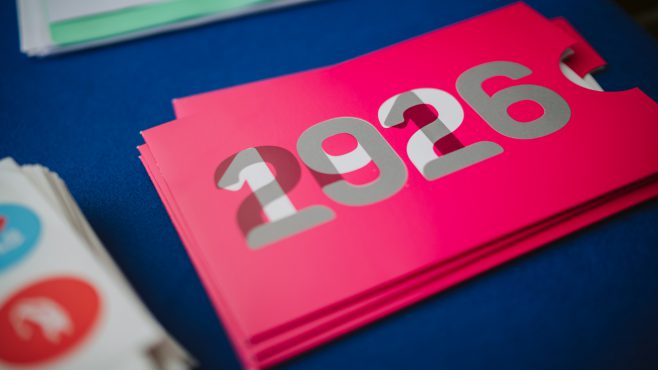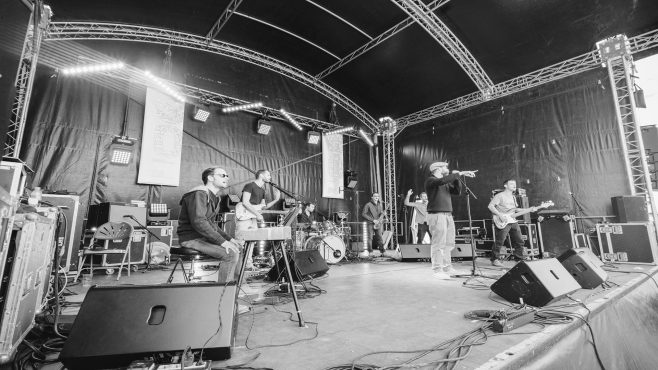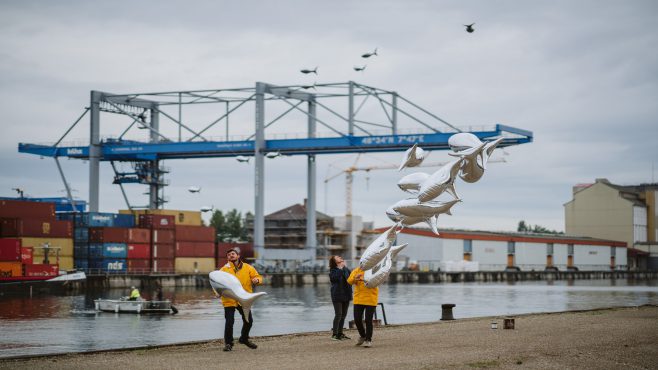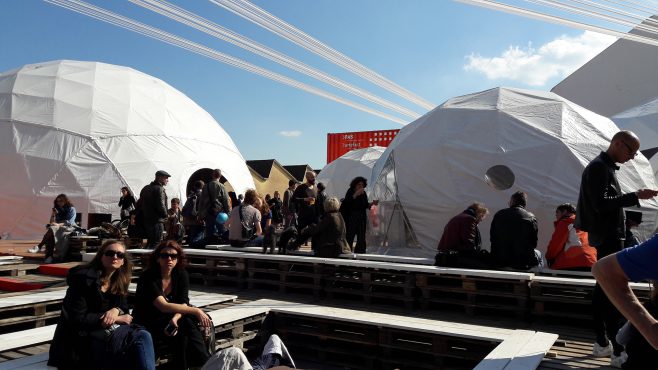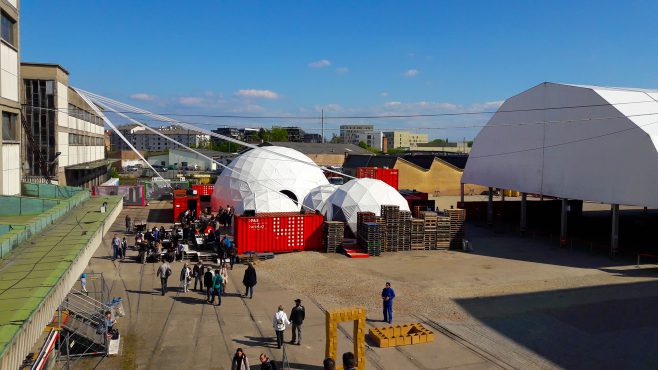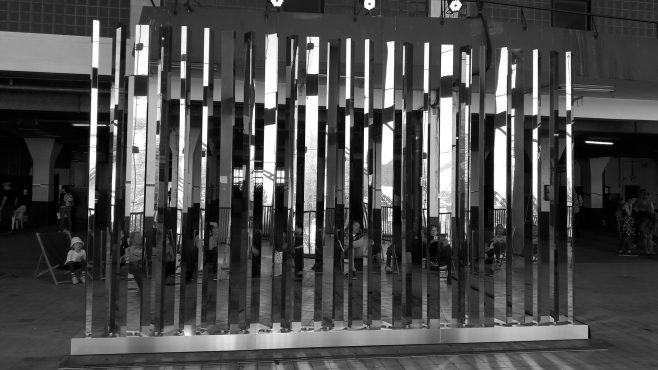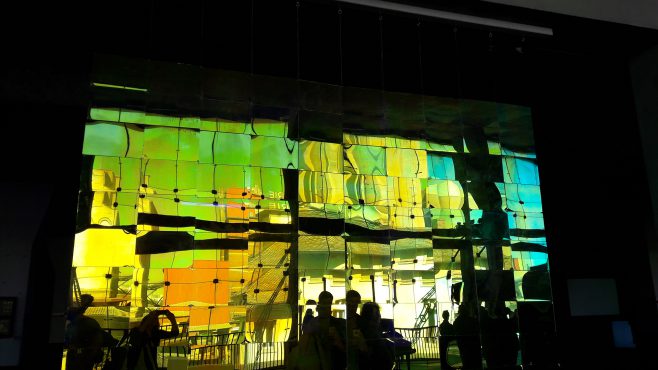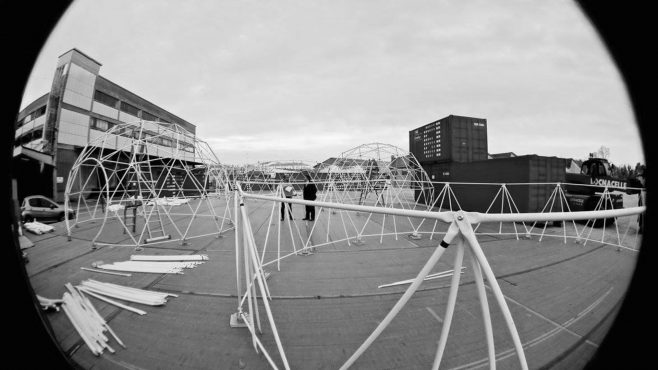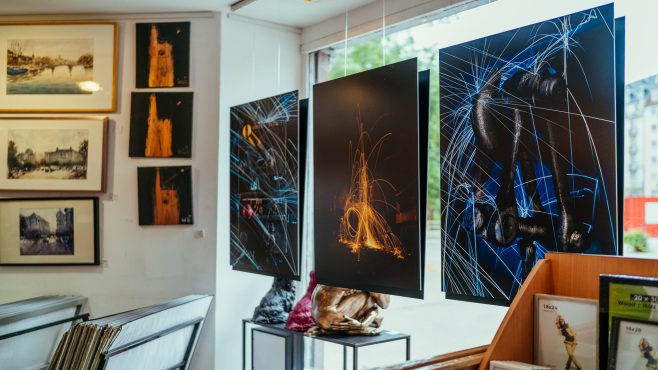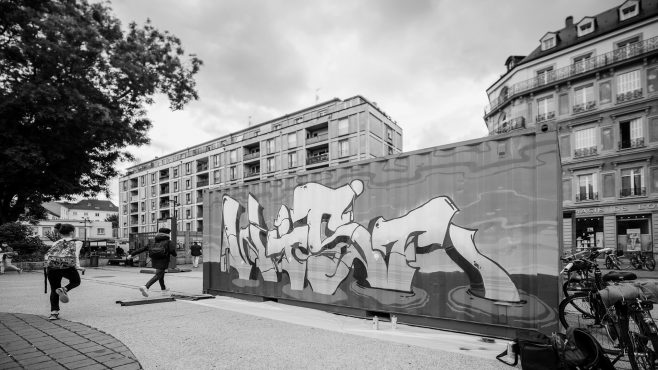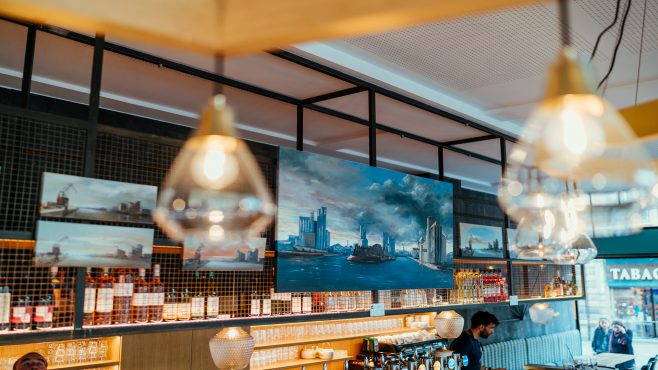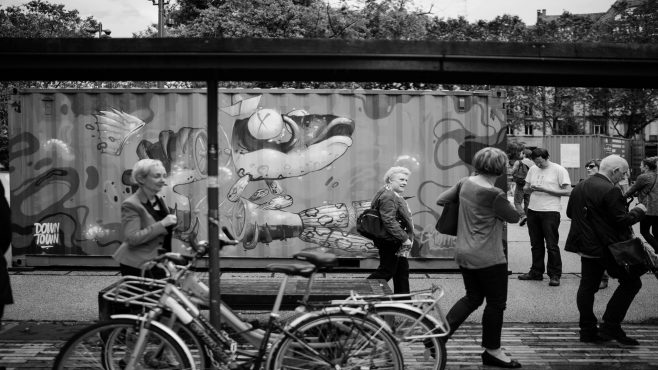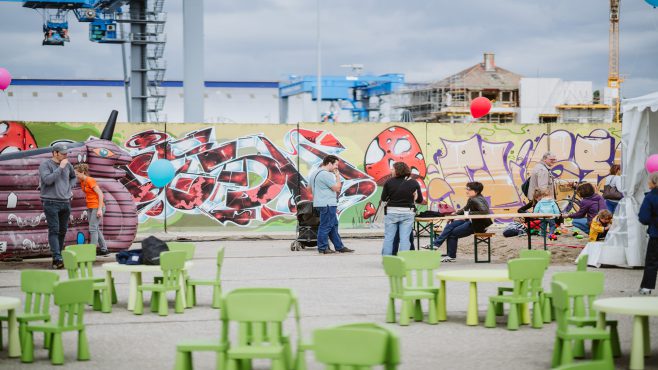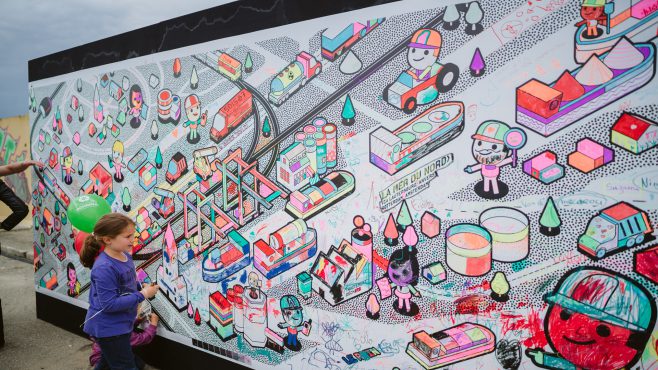Central position - yesterday and today
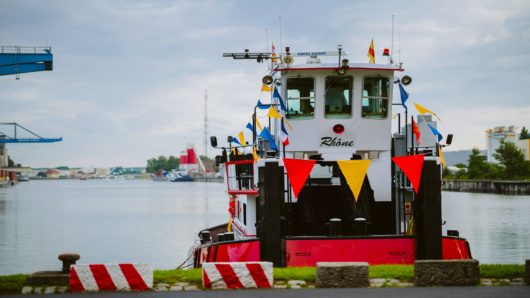
Unlike many other port cities, the PAS has always occupied a place in the city – so much so that it is not unusual to walk, drive or ride through it. Over the centuries, the port has always been in the heart of the city: first at the foot of the cathedral, at the former customs house (Ancienne Douane) starting in the Middle Ages, then using the Hospital Dock (Bassin de l’Hôpital) and the Austerlitz Dock (Bassin d’Austerlitz) in the 19th century. It was not until the 20th century that there was any real separation between the city and the port – this was when the port moved to the banks of the Rhine, onto land that had formerly been occupied by the military.
In the past, Strasbourg had kept its distance from the Rhine and its dangerous flooding, but now it is opening up in every direction, and it spreads towards the Rhine. With the Deux-Rives district and new urban developments strengthening the links between the City of Strasbourg and Kehl in Germany, the port once again occupies the central position it held in centuries past – right at the heart of the city.
Being an urban port makes it even more important to have a vision and accept greater responsibilities.
